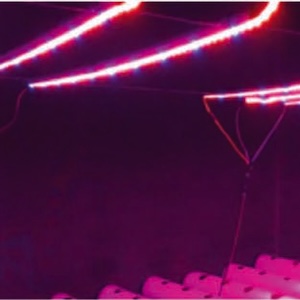Effect of different photoperiod regimes in combination with natural and artificial light on nutrient uptake in bok choy (Brassica rapa L.) using an internet of things-based hydroponics system

HTML: 1
All claims expressed in this article are solely those of the authors and do not necessarily represent those of their affiliated organizations, or those of the publisher, the editors and the reviewers. Any product that may be evaluated in this article or claim that may be made by its manufacturer is not guaranteed or endorsed by the publisher.
Authors
In the present study, we analyzed the effect of using a hydroponic system inside a greenhouse and different photoperiod regimes with artificial light on the nutrient uptake of bok choy. Light duration treatment consisting of both sunlight and artificial light was applied to determine the optimal photoperiod for bok choy. Advanced technology—a wireless sensor network and Internet of Things—was used to monitor and maintain nutrient concentrations. Additionally, plant growth was evaluated using image processing technology. A higher amount of P was observed to be accumulated in plants grown in plots without photoperiod. Meanwhile, excessive photoperiod was found to reduce K content in plants. The optimal photoperiod in this study was 20:4 (light:dark), which is a combination of 12 h of sunlight and 8 h of artificial light. Additionally, image processing technology helped monitor plant growth. Pixel information in images can represent plant growth with a R2 value of >0.8. Further, the addition of photoperiod affects the dry weight of yields and growth rate, which is highly correlated to nutrient uptake, with R2 values of 0.84 and 0.72, respectively. The combination of artificial light and sunlight along with the optimal photoperiod can optimize the growth of bok choy with appropriate NPK uptake.
How to Cite

This work is licensed under a Creative Commons Attribution-NonCommercial 4.0 International License.
PAGEPress has chosen to apply the Creative Commons Attribution NonCommercial 4.0 International License (CC BY-NC 4.0) to all manuscripts to be published.

 https://doi.org/10.4081/jae.2024.1579
https://doi.org/10.4081/jae.2024.1579



